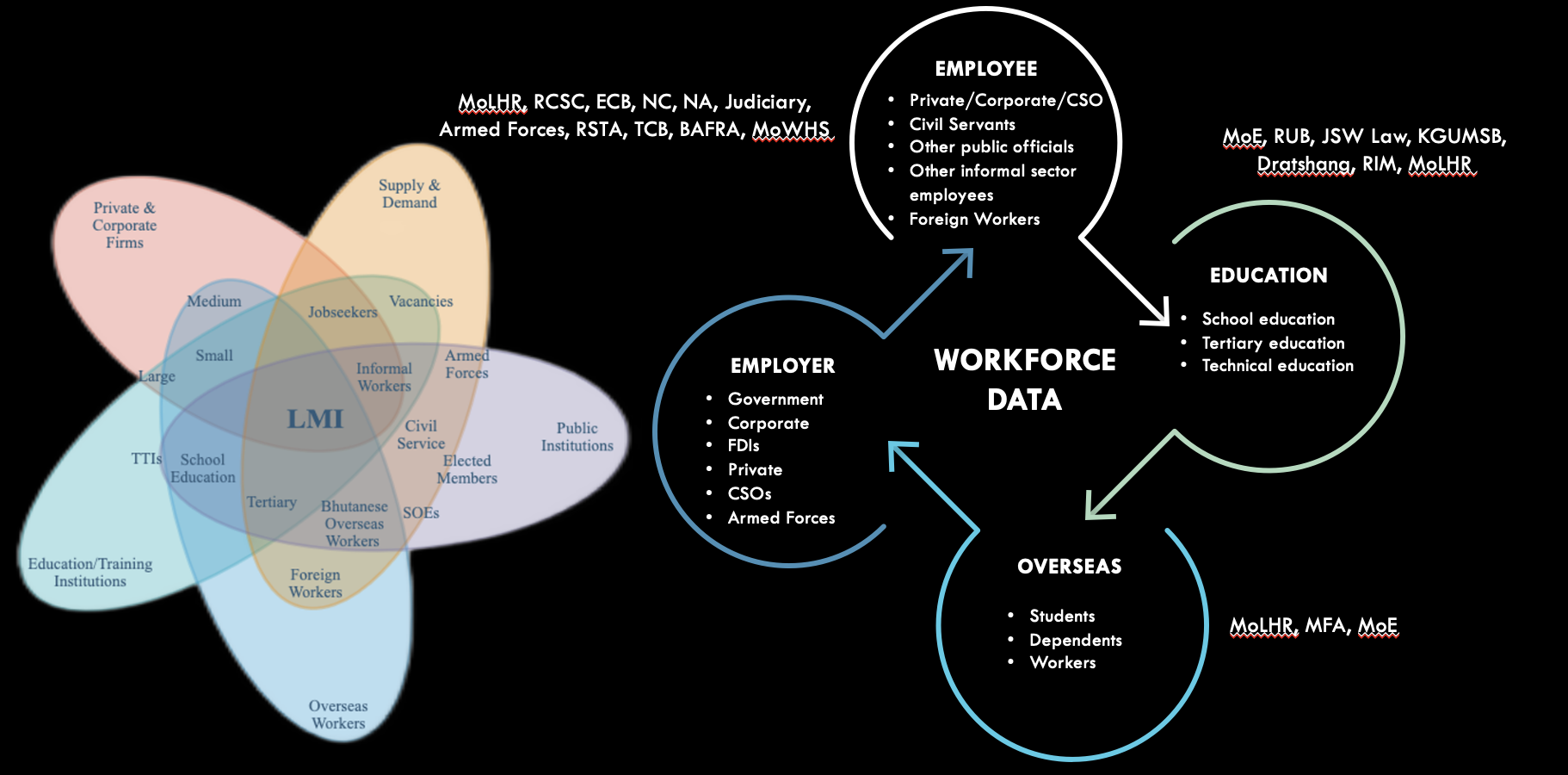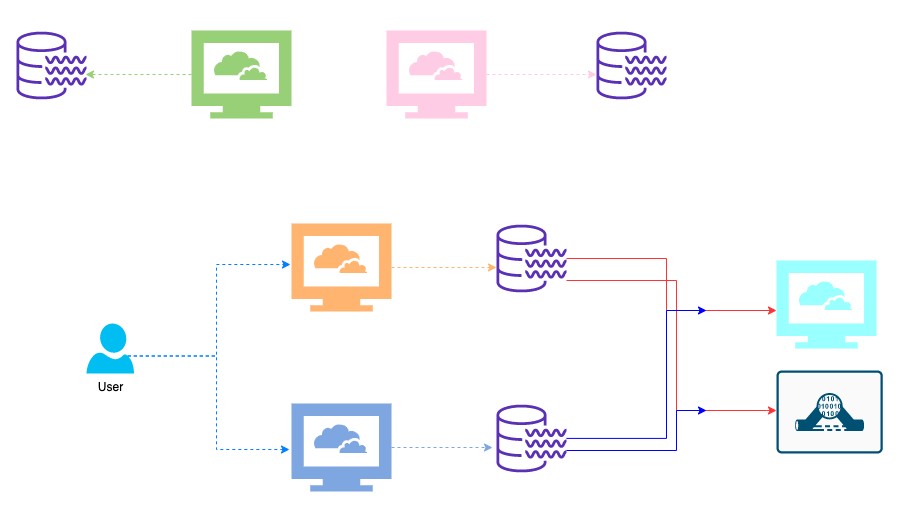Projects
Labour Market Intelligence
 Rationale :
Rationale :
Administrative data has become increasingly useful and ever more important as survey reports do not provide individual-level information. Administrative data are primarily
collected for the purpose of record keeping and contain enormous volumes of information updated at regular intervals without much additional expense on data collection and
generally capture the whole population. One such example is the enterprise and labour force (employment and unemployment) data which are being recorded by various agencies a
nd sectors. In the absence of a framework to integrate these administrative records into one system, the Government has not been able to leverage this chain of data for
data-driven decision-making and monitor the labour market scenario.
The purpose of this activity is to develop an inclusive Labour Market System (LMS) which will function as the central repository and dissemination interface for all information
on enterprises and labour force. The initial phase of the activity will focus only on the formal sectors of the economy.
SST for Land and Building

Rationale :
As Bhutan embarks on unprecedented digital transformation through various ICT initiatives, data
will be a powerful resource not only in making data-driven policy decisions but also in providing
improved public service. Currently, there is an unclear policy or law defining the roles and
responsibilities of different agencies in data collection, collation and processing, and data
standards. There is also a lack of coordination among the agencies whereby organizations are
collecting, processing, and storing the same data irrespective of its usage and its usefulness of
data. There are numerous examples of how the same information is collected and processed by
agencies. Likewise, in the absence of data standards, most of the stored data in different
organizations lack consistency, accuracy, and sometimes completeness. Moreover, the data
collection effort is redundant across the organizations.
To facilitate access to information on land, infrastructure, buildings, and addresses, this project
intends to develop a spatial data infrastructure in which all stakeholders can cooperate, improve,
update, and exchange data in an efficient and cost-effective manner. Currently, the lack of a
well-established framework for technical and institutional arrangements as well as an overall
policy for the acquisition, management, and distribution of spatial data information presents a
major constraint. Limitations in data coordination and sharing mechanisms result in duplication
of data collection and production, data incompleteness, non-standardized or poor-quality data,
more importantly, inefficiency and low financial sustainability.
Single Source for Truth for Energy
Rationale :
With a vision of energy security for economic prosperity, social progress, and the well-being of
Bhutanese, Bhutan strives to achieve energy security by harnessing green energy resources and
adopting transformative and innovative technological solutions.
Energy data is vital for building efficiency, enabling policymakers to adapt to
changing usage patterns and understand energy consumption. It provides a
detailed account of assets, enabling strategies for achieving net-zero carbon
emissions and enhancing asset utilization.
In an effort to streamline the traditional processes of data collection and analysis
on the energy data points in Bhutan, this project aims to identify the single source
of truth for all energy data points and automate processes for data collection as
well as add contextualization and trigger actions to the collected data to
understand the correlations between data points.
Data Governance Framework
Rationale :
An efficient data ecosystem with quality data provides indisputable evidence to overcome the
current situation of anecdotal evidence and assumptions-based decision making thereby saving
limited national resources. Although regular surveys/censuses conducted by various agencies
supply enormous volumes of data, the traditional acquisition of data has evolved into a new form
with the advent of digitization and advancements in technology. Public, as well as private
organizations, have leveraged these tools amassing huge amounts of data primarily for the
purpose of record keeping with information updated at regular intervals without much additional
expense on data collection. Other alternate data sources include social media sites and the
Internet of Things (IoT) generating unique data features. These kinds of data have become
increasingly useful and ever more important as they provide more diverse and granular
information. The blending of conventional and innovative data sources would further enhance
the existing data ecosystem and strengthen the coordination and collaboration amongst the
institutional framework and arrangements in place for data sharing and usage.
The Data Governance Framework applies to all kinds of data managed by various agencies and
stakeholders in the country. The main objective of this Data Governance Framework is to
establish a set of roles and responsibilities and formalize the structural process of data sharing
mechanism to ensure ownership, transparency, and accountability thereby improving the data
infrastructure and the sustainability of the whole data ecosystem in Bhutan.
Data Management Guide
Rationale :The rapid development of technology on the one hand and the demand for online services from the citizens, on the other hand, require the need for collecting various data types from different sources. It ranges from public to personal to confidential data and as such Government organizations are concerned about security and ownership when requested to share data. Accessibility and availability of data through e-services heighten the information security risk and it necessitates safeguarding these information assets in governmental organizations. The step towards safeguarding and protecting data is to consider factors such as what kind of data can and cannot be shared with whom and in which format besides its criticality and sensitivity.
The objective of these guidelines is to :- Minimize potential errors and risks by establishing data handling processes and policies;
- Uphold service users' trust in handling their sensitive information by complying with legislative standards;
- Optimize the management of data for the agency's needs (e.g. to identify trends for service planning, enhance the quality of service delivery, monitor service users' journeys, etc.)
